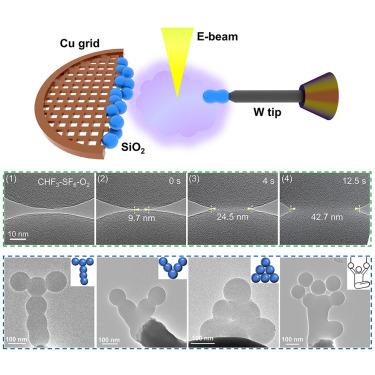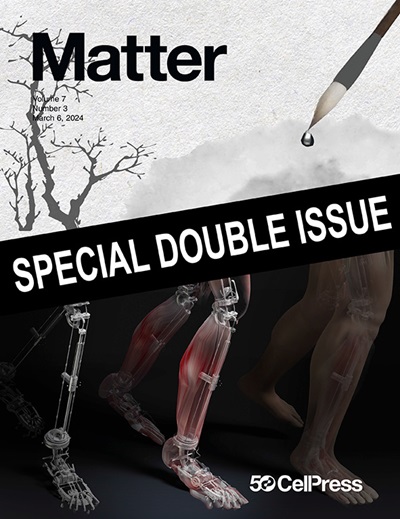Nanoscale cold welding of glass
IF 17.3
1区 材料科学
Q1 MATERIALS SCIENCE, MULTIDISCIPLINARY
引用次数: 0
Abstract
Bottom-up assembly and joining of silica nanoparticles to form complicated geometries up to three-dimensional (3D) glass structures are attractive for nanoscale optical, optoelectronics, etc. Most existing silica 3D printing techniques can only achieve submicron-level precision due to the optical limit of vat photopolymerization, which presents critical challenges for sub-100 nm printing. In this context, we introduce an electron-beam-assisted cold welding technique for nanoscale glass that is capable of achieving precision at the tens-of-nanometers scale. This method enables the direct fusion of two amorphous silica nanospheres within a few seconds while keeping the diameter smaller than 100 nm. Meanwhile, the strength, composition, and structure of the as-welded junctions appear the same as those of the pristine silica. Our approach would potentially allow ultra-high-resolution 3D bottom-up assembly and printing of silica nanostructures with ultimate resolution subject to the nanoparticle size only, which offers a new approach for additive manufacturing of nanoscale glass devices.

纳米级玻璃冷焊
自下而上地组装和连接二氧化硅纳米颗粒以形成复杂几何形状的三维(3D)玻璃结构对纳米级光学、光电子学等领域具有吸引力。由于大桶光聚合的光学极限,大多数现有的二氧化硅三维打印技术只能达到亚微米级的精度,这对 100 纳米以下的打印提出了严峻的挑战。在此背景下,我们介绍了一种用于纳米级玻璃的电子束辅助冷焊接技术,该技术能够实现数十纳米级的精度。这种方法能在几秒钟内将两个无定形二氧化硅纳米球直接融合,同时保持直径小于 100 纳米。同时,焊接后结点的强度、成分和结构与原始二氧化硅相同。我们的方法有可能实现超高分辨率的三维自下而上组装和打印二氧化硅纳米结构,其最终分辨率仅受纳米粒子尺寸的限制,这为纳米级玻璃器件的增材制造提供了一种新方法。
本文章由计算机程序翻译,如有差异,请以英文原文为准。
求助全文
约1分钟内获得全文
求助全文
来源期刊

Matter
MATERIALS SCIENCE, MULTIDISCIPLINARY-
CiteScore
26.30
自引率
2.60%
发文量
367
期刊介绍:
Matter, a monthly journal affiliated with Cell, spans the broad field of materials science from nano to macro levels,covering fundamentals to applications. Embracing groundbreaking technologies,it includes full-length research articles,reviews, perspectives,previews, opinions, personnel stories, and general editorial content.
Matter aims to be the primary resource for researchers in academia and industry, inspiring the next generation of materials scientists.
 求助内容:
求助内容: 应助结果提醒方式:
应助结果提醒方式:


